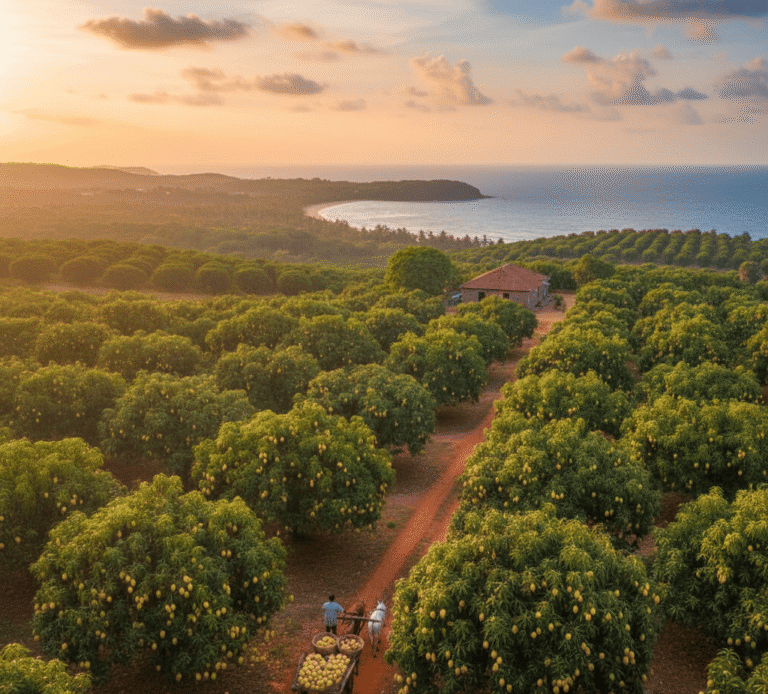Maharashtra’s administration has approved accelerated development of the Revas-Reddy Coastal Highway — a modern expressway designed to reduce travel duration between Mumbai and Sindhudurg to merely five hours.
This transformative infrastructure project aims to introduce a new era of efficient transportation, enhanced tourism, and regional economic development throughout the Konkan area. The Maharashtra State Road Development Corporation (MSRDC) is spearheading construction of this ambitious expressway, which will traverse Raigad, Ratnagiri, and Sindhudurg districts. Built as a controlled-access roadway, it will deliver improved speed and enhanced safety to an area traditionally hampered by cramped roads, traffic congestion, and unpredictable journey times.
Running parallel to the picturesque Konkan coastline, this new expressway will alleviate pressure on the heavily congested Mumbai-Goa Highway while providing a smooth alternative for both daily commuters and vacation travelers. The route combines practicality with scenic beauty, offering motorists continuous vistas of the Arabian Sea, dramatic cliff faces, river mouths, and traditional fishing communities along the shore.
The project incorporates nine crucial creek crossings positioned at strategic locations including Revas-Karanja, Revdanda, Agardanda, Kelshi, Kalbadevi, Dabhol, and Jaigad, among other sites. Construction has already begun on several of these structures, with officials prioritizing rapid completion of the remaining sections. These crossings are engineered to contemporary specifications, designed to withstand both weather extremes and increased traffic loads while minimizing ecological impact.
Upon completion, the Revas-Reddy Coastal Highway will deliver benefits extending far beyond improved transportation efficiency. It will increase access to remote coastal settlements, strengthen local economies, and facilitate balanced urban development throughout the Konkan region — an area that has remained economically underutilized despite its abundant natural and cultural resources.
Tourism will receive a significant boost as the highway creates renewed access to Maharashtra’s lesser-known treasures, from pristine shorelines and historical fortifications to nature-based tourism destinations and traditional fishing communities. Journeys that previously required up to ten hours with multiple stops will transform into comfortable five-hour trips, encouraging weekend getaways, local accommodation services, and seaside recreational activities.
Transportation experts anticipate the highway will trigger distributed economic growth. Enhanced connectivity is expected to attract real estate investment, small manufacturing operations, tourism services, and agricultural tourism to previously remote locations. This supports the overarching goal of balanced, environmentally conscious development — relieving pressure from Mumbai’s overcrowded areas while strengthening rural and semi-urban economies.
Environmental protection remains central to the highway’s planning approach. The route deliberately avoids sensitive mangrove habitats and follows principles of carbon-neutral development, incorporating eco-friendly building materials and advanced drainage systems capable of managing monsoon conditions in coastal environments.
The highway’s connection with current and planned infrastructure — including the Mumbai Trans Harbour Link and the enhanced Mumbai-Goa Highway — will integrate it into Maharashtra’s expanding transportation network. Authorities are also investigating methods to ensure the new corridor remains affordable and accessible across all economic groups, particularly communities residing along the construction path.
Looking ahead, the Revas-Reddy initiative could serve as a model for how India’s coastal regions can upgrade infrastructure while preserving environmental sustainability and promoting social equity. It represents the convergence of improved, safer transportation with opportunities for economic revival — connecting communities and creating opportunities one crossing and one settlement at a time.
As development continues, the coastal highway represents more than infrastructure expansion — it serves as a vital connection poised to reunite communities, destinations, and opportunities along Maharashtra’s historic coastline.


